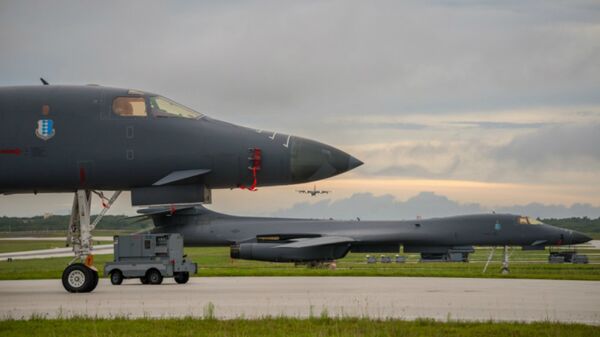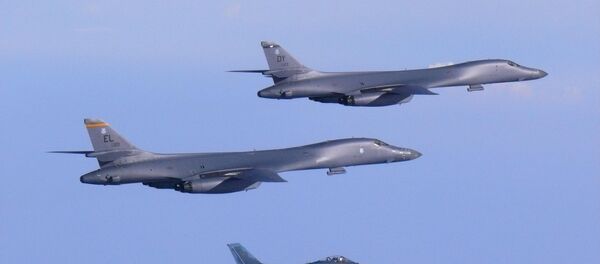"This is a clear demonstration of our ability to conduct seamless operations with all of our allies anytime anywhere," US Air Force Maj. Patrick Applegate said in an October 10 statement issued by US Pacific Command. "Flying and training at night with our allies in a safe, effective manner is an important capability shared between the US, Japan, and the Republic of Korea," the major said, adding that the drill "hones the tactical prowess of each nations' aviators."
Taking off from South Dakota, the drill marked the first time B-1B Lancers carried out training drills with Japanese and South Korean counterparts simultaneously at night, USPACOM added. The strategic bombers were escorted by Japan's F-15s and South Korea's F-15Ks while flying around the Sea of Japan.
The warplanes rehearsed an air attack over the Korean Peninsula, to the Peninsula's east in the Sea of Japan, and to the Peninsula's west in the Yellow Sea, Yonhap report. This included firing air-to-ground missiles.
The South Korean Joint Chiefs of Staff spoke of the drill as just one component of "regular deployment training" aimed at enhancing interoperability between the air force teams and applying "extended deterrence" against Pyongyang, the Yonhap report says.
According to a JCS statement, "through practice at this time, South Korean and US air forces showed off their allies' resolve for strong retaliation against North Korea's nuclear and missile threats."



